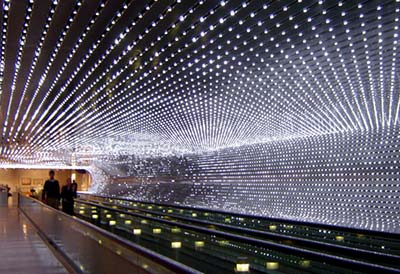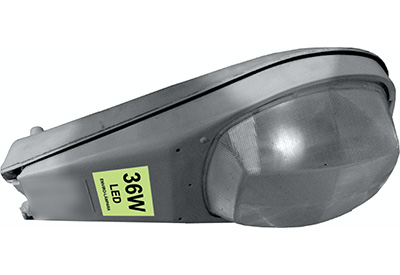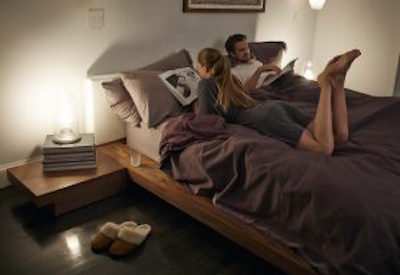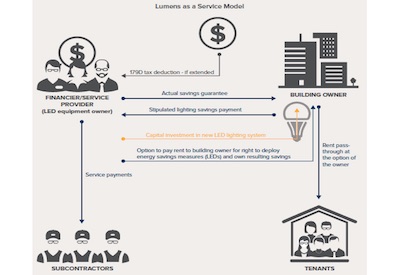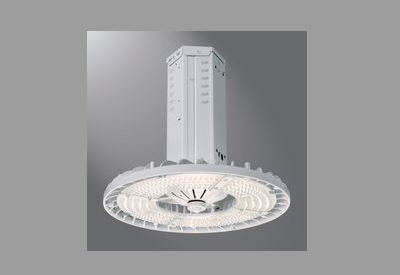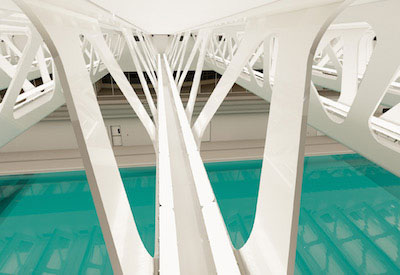Selecting the Right Industrial Lighting, Part 2

March 16, 2018
Part 1 in this 3-part series provided an overview of lighting for industrial workplaces, plus two major reasons why lighting matters. Having considered both the role of lighting in the workplace and its contribution to capital costs and overheads, here are nine factors to consider in the selection process.
- Performance criteria
We have reached a point of maturity with quality purpose-built LED luminaires where the performance is now often well in excess of 120 luminaire lumens per circuit watt (Ll/cW). It is important to note, however, that, in comparing performance criteria, the Ll/cW figure must refer to the output of the fitting rather than just the LED source. Certain aspects of the fitting can affect the efficiency of the LED so buyers need full knowledge. Furthermore, the stated operating wattage must be the actual operating wattage of the luminaire. Careful scrutiny of both figures will help ensure accurate payback calculations.
The practical life of the LED luminaire can be up to five times longer than fluorescent and HID alternatives. Like all light sources, an LED source will gradually fade over a period of time but, crucially, this decline is far slower than for other forms of lighting. This is an important consideration for industrial facilities that need consistent and reliable lighting without the disruption of regular maintenance work and compact fluorescent lamp replacement procedures.
A lighting device is considered to have failed at the point in time when the lumen value has depreciated to 70% of the initial lumen value. This is similar to the approach taken with conventional discharge lamps.
Therefore, the “practical life” is defined as the period of time between the LED first being activated and the point at which its output falls below 70% of its initial output. This is symbolised by the letter ‘L’ so, to give an example, a quoted specification might look like the following: ‘L70, 50,000 hours’ or ’50,000 to L70’.
Although this standard is usually sufficient for conventional light sources, which are normally directly replaceable, some additional clarity is required when determining the expected lifespan of LED lamps or luminaires with non-replaceable LEDs.
For this reason, a further metric was added to the equation. The letter ‘B’ is used to denote the percentage of the sample batch which are no longer producing 70% or more of the initial output after the specified period of time.
In other words, B is the proportion that have fallen below the required performance level, or failed completely. Taken together, the metric quoted might be ‘L70B10 50,000 hours,’ which means that 90% of the batch is still performing at a minimum of 70 of the lumen value after 50,000 hours. To provide even more detail, a manufacturer can additionally quote figures for different timespans, for example ‘L70B10 50,000 hours’ and ‘L70B5 42,000 hours.’
Over time, the metric of ‘L80’ is expected to be introduced to provide a simplified metric for the performance criteria of a luminaire.
- A close-up inspection
Testing an LED for an expected lifespan of 50,000 hours would take 5.7 years and is therefore impractical. Usually, figures are extrapolated from a testing period of 6,000 hours during which measurements are taken. Specialist photometric laboratory equipment is necessary for accurate measurement. Furthermore, it is important to remember that numerous factors can influence the lifespan of LED lighting, including operating conditions such as humidity and heat, and the incorporation of heat sinking or ventilation to reduce the build-up of heat at the LED junction.
The Lighting Industry Association acknowledges in its Guide to LED Lighting the difficulties that buyers may face when deciding between products: “Like all products, there are good ones and bad ones. As the technology develops, many more companies are offering LED products for sale and there are plenty of rogue claims being made for the performance of poor quality products. Always look to buy from a reputable manufacturer and look for evidence that the performance has been verified by an authority or third party. Buying poor quality LEDs is a false economy. We would recommend looking at the light output rather than the wattage to judge the lamp.”
By looking at the lumen performance of the LED luminaire and not just its wattage, the specifier will be able to compare the true performance of the LED luminaire against a conventional lamped luminaire. This will identify the benefits in reduced energy consumption for a real application while retaining the correct illumination level and quality.
A reputable manufacturer should be able to provide a set of information that includes the lumen distribution and lumen performance of the complete luminaire, not just the LED. This information should also specify the life of the LED or luminaire, the ambient temperature range that the luminaire is designed to operate in, the initial colour temperature and colour rendering (Ra), along with the colour tolerance in terms of the numbers of steps off the Macadam’s ellipse. In the latter category, a quality LED will typically be three to four steps for commercial and domestic applications, whereas for industrial applications, a wider tolerance will normally be acceptable. The product data should also indicate any colour shift through the life of the LED.
Bearing in mind the general rules outlined above, it is vital to consider the specific demands of different industrial applications, which can range from blast furnace facilities to clean rooms in which close examination of tiny electronic components is essential. Each of these environments comes with its own unique requirements and challenges.
- Tailored to the task
First and foremost, the lighting scheme must be appropriate to the tasks being conducted in a given space. It is important to note here that this could vary in separate areas of a site. An automotive production line, for example, might involve heavy-duty metalwork at one end and precision spray painting at another. While the former might require robust high-bay luminaires to provide an even and efficient distribution of light on the floor to ensure upmost safety, the latter may demand advanced task lighting that enhances workers’ ability to conduct close-up inspection of small details.
Without the provision of lighting that is aligned to the particular task being undertaken, employees may not be able to fulfil their duties as quickly, accurately or safely as they would like. Bearing in mind the pressures mentioned earlier, in terms of maximising productivity, retaining competitive advantage, achieving efficiency and delivering quality end-products to customers, the marginal disadvantages of inappropriate lighting could escalate into a significant setback.
- Colour rendering
Lighting can have a considerable impact on how humans perceive colours. A surface that looks to be brilliant white under one light, may have a yellow tinge under another light. In many circumstances, this does not present an issue, but in a number of applications, the accurate perception of colours can be absolutely crucial. In electronics, for example, close examination of tiny electronic components is inherent in the quality assurance process. The same is often true in certain pharmaceutical, laboratory, printing, painting and food manufacturing environments. The paint finishing process in automotive plants, for example, relies upon extremely accurate colour matching.
A luminaire’s ability to display coloured objects in their true colour is assessed in terms of colour rendering, which is measured in the context of a colour rendering index (CRI) based on RA units. Accepted practice, formalised by the EN12464-1 standard, is that a level of RA80 should be delivered in permanently occupied workspaces. This is generally the level that should be expected in offices and standard factory environments. In warehouses that are not permanently occupied, a level of RA60 is broadly acceptable. At the other end of the spectrum, where a true representation of colour is crucial, a level of RA90 is recommended.
While metal halide lamps have shown to perform at a level of between RA40 and RA60, SON lamps are typically measured at around RA30. LED luminaires, which generally deliver superior quality of light, perform more consistently in terms of colour rendering, as well as colour temperature.
- Cleanliness and hygiene
In sectors where regular and thorough cleaning is essential to regulatory compliance and quality assurance, a luminaires’ ability to withstand washing procedures is another important consideration. There are a number of areas where this applies, including food and beverage manufacturing. In these cases, it is not just the front panel of the luminaire that must be washable but any exposed fittings. A general rule is that there must be no horizontal ledges where dirt could build up.
In the electronics industry, where designated clean rooms are prevalent, the elimination of dust is critically important. Standards are applied that specify the maximum amount of dust particles that can exist in the space, measured in microns per cubic metre. From a lighting perspective, the most important characteristic of a luminaire is that it is tightly sealed to ensure no such particles could possibly escape from within.
The general rule for hygiene is that the selected luminaires must be able to accommodate the cleaning regimes that are applied in a given environment. These regimes could range from wipe- clean procedures to jet washing. In the latter case, the ingress protection offered by a luminaire becomes a key consideration in the selection process.
Ingress protection is measured in terms of IP rating, as defined by the international standard IEC 60529. The IP rating is comprised of two figures, the first of which refers to protection against solids and the second of which refers to protection against liquids. In the first category, 6 denotes complete protection against the ingress of dust. This is an important specification in many industrial applications, such as woodworking, where high volumes of dust could potentially find their way into the body of a luminaire that is not sufficiently protected, thus interfering with its normal operation.
In the second category, a rating of 5 denotes protection against water jets, 6 denotes protection against powerful water jets, 7 enables submersion up to 1m and 8 enables submersion beyond 1m.
In some applications, a rating of IP65 may be acceptable, while applications with rigorous cleaning regimes that involve jet washing might seek a rating of IP66 or higher.
- A measure of strength
Industrial operations are often characterized by harsh conditions, which require luminaires that are robust enough to withstand environmental factors and impacts. Alongside the IP rating of a luminaire, buyers should also give consideration to the IK rating, which denotes impact protection. In the manufacture of construction materials, for example, where debris or forklift vehicles could come into contact with luminaires, the luminaires must have some degree of resistance to the impact. One factor that enters this equation is the likely height at which the lighting will be positioned. Luminaires that are close to the workspace, such as task lighting, are more likely to be struck with an object than their high-bay counterparts that are deliberately positioned above the zone where such movement is occurring.
Impact protection is not only a concern in rough or heavy industrial workplaces but also in others such as food manufacturing, where any breakage that causes loose debris could create a risk of contamination. The glass used in conventional lamps has been a particular concern for the food industry, since glass cannot be detected by the x-ray equipment that may be used to detect contaminants in the end product.
This is one major benefit of installing LED luminaires, which do not contain glass but are nevertheless protected by a polycarbonate front plate.
Another consideration in some applications might be the presence of corrosive substances such as fatty acids, which may damage plastic parts of luminaires. Again, the particular specifications of the plastic used within the luminaire should be closely interrogated during the selection process.
- Extremes of temperature
Ambient temperatures in industrial and manufacturing buildings can vary wildly from freezing temperatures in cold stores to extremely high temperatures in boiler rooms or furnaces. Selecting a luminaire that will withstand such extremes is important.
One of the characteristics of LED lamps is that they emit far less heat into the working space than their incandescent counterparts. The reduced heat they do generate (approximately half that of HID lamps) is generally dissipated through the back of the unit rather than being projected through the front.
As a result, LED luminaires are well suited to cold storage rooms, where conventional lamps may raise the ambient temperature to a point where refrigeration equipment must work harder to maintain a sufficiently low temperature.
Another distinctive benefit of LEDs is their ability to switch on instantly, even in cold environments. Unlike conventional lamps, which can take up to several minutes to reach full luminance, LEDs do not need such time and may therefore act as an aid to productive working.
In cold store applications, the energy efficiency of LED luminaires can be dramatically enhanced with the addition of automated presence control, whereby passive infra-red (PIR) sensors may be deployed to detect movement and activate light sources accordingly. In general terms, a standard ambient temperature of 25°c is used by reputable manufacturers as a basis for testing and any small and temporary fluctuations above that, in the summer for example, can usually be accommodated. However, hot environments, such as those found in the ceramics and metalwork industries, can adversely affect the lifespan, output and energy efficiency of LED luminaires. Careful consideration of the luminaire’s specifications may be required in such circumstances and particular attention paid to the thermal management capabilities of the unit.
- Taking control
As we have already established, energy efficiency remains high on the agenda of those responsible for the running of industrial buildings. Often in industrial and warehouse applications, workspaces are illuminated with background light due to the area being unoccupied for periods of time.
By adding switching or dimming controls it allows these unoccupied spaces to be switched off or down to a lower background level of illumination allowing even greater savings. The actual level of savings is dependent on the individual building and operating procedures, but can add significantly to the overall energy savings with no negative effect on either safety or productivity.
Therefore, the introduction of LED luminaires to replace outdated incandescent lamps can dramatically reduce monthly energy bills but further efficiencies are possible with the use of control systems. Indeed, an industrial organization’s ability to meet increasingly strict sustainability regulations might depend to some extent on the use of controls to maximize the efficiency of lighting.
The practice of manually switching lighting on and off is becoming increasingly anachronistic with the growing use of control systems that can activate and de-activate lighting automatically in response to certain inputs.
Presence detection is one important area of control. Occupancy sensors send a signal to activate lighting when a person enters a space and switch off the lighting when the area is empty.
There are two main types of detection technology, the most common of which are passive infra-red (PIR) sensors. These have distinctive detection patterns that must be taken into account when deciding on the location and direction of the installed sensors. The second category are microwave movement sensors, which emit a continuous wave of microwave radiation that is disrupted by movement. Again, the mounting of these sensors during installation is of paramount importance in ensuring accurate detection and minimizing nuisance activations.
Light levels can also be subject to controls. In this case, the control system, using photo cells, has the ability to detect changes in daylight and activate artificial lighting accordingly. This is common in outdoor areas but increasingly used indoors too as part of a technique known as daylight balancing. The advantage is not only that costs can be reduced but the provision of natural daylight can make an important contribution to health and wellbeing, as described earlier in this white paper.
A note of caution here is that controls in industrial environments must be applied with care, and due consideration must be given to the tasks, equipment and risks that may exist within a given space. For example, an operator of moving or dangerous equipment could potentially be plunged into darkness or dimmed light if the control system has not detected human movement. Similarly, the inspection of a plant room may involve long periods of stillness, during which the person carrying out the inspection could find themselves in darkness due to the control system. Both scenarios may place the respective staff members in danger. \It is no coincidence that controls have risen in popularity alongside LED since these luminaires are dynamic enough to enable frequent on-off switching without adversely affecting their lifespan and will provide full illumination immediately, rather than taking time to warm up and cool down.
Like many traditional light sources, LEDs can be dimmed, if paired with a suitable control mechanism and dimming driver. Dimming technologies, which usually fall under the definition of DALI (digital addressable lighting interface) enable control of light levels but any assumption that dimmed lights save energy is incorrect due to the counter-intuitive relationship between dimming and energy usage. Depending on the specification of the LED driver, the energy used by a dimmed light may actually be higher than when it is producing full output.
One area of development sees real-time control of how a workspace is illuminated handed to the individual within that space. Personal preferences can differ and it is now possible to enable individual lighting control via web connectivity and associated protocols.
- Hazardous environments
In hazardous industrial environments, ATEX compliance becomes the primary concern, and this applies as much to lighting as any other equipment. Buyers may want to consider explosion-proof luminaires, depending on whether the risk profile of the space classifies it as zone zero, one or two. These considerations apply not only in industries that are generally considered as hazardous, including chemical processing and power generation, but even in sectors such as food manufacturing, where particles of flour or coffee in the air could be highly flammable if ignited.
In these cases, specialist advice should be sought from an established lighting supplier with the necessary certifications and experience.
Conclusion
In summary, industrial buildings stand to benefit significantly from a close evaluation of their lighting needs and a detail- orientated investigation of the available options. In doing so, those responsible for such buildings can ensure their lighting schemes optimize productivity, comfort, safety and energy efficiency. However, to achieve these goals it is essential to scrutinize product specifications and give due consideration to the specific application needs of varying industrial environments.
When selecting a luminaire, specifiers and buyers must examine factors such as light output and distribution, colour rendering, resilience, suitability for cleaning, ability to cope with temperature variations, controls and protection against explosion.
Graham White is a lighting technical manager at Eaton. This series of articles is based on a white paper published by Eaton.
Read Part 1: https://www.lightingdesignandspecification.ca/led-technology/2164-selecting-the-right-industrial-lighting-part-1. Read the paper in its entirety here: http://electricalsector.eaton.com/en-gb_industrial_lighting_solutions_whitepaper.

